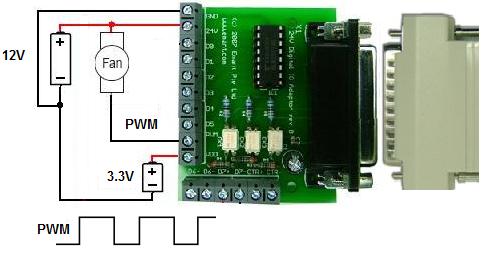PWM - Pulse Width Modulation
Learn:
- PWM
A typical PWM application is to control the speed of a DC Fan motor. Using Pulse-width modulation (PWM), the fan's power supply is turned on and off at a fixed frequency. By changing the duty cycle, we control the speed of the fan. The larger the duty cycle, the faster the fan spins. Typical frequencies range from 20Hz to 160Hz.
The advantages of PWM include a very simple drive circuit, good startup characteristics, and minimal heat dissipation in the switching transistor. The disadvantages involve increased stress on the fan and the inability to use on board speed or alarm sensors.
However we cannot drive the fan directly from the EMANT3X0 PWM Output because
- the current needed to drive the motor is greater than the 20mA allowed by PWM Output
- the fan supply voltage (eg a 12V fan) may be greater than that allowed by PWM Output (5V for the EMANT300 and 3.3V for the EMANT380)
The 24V DIO Application Adaptor can be used with the PWM output of the EMANT380 Bluetooth DAQ module to drive a DC Fan.
